by Wallace Wyss –
In the mid-60’s Fiat wanted to make a volume sports car, one that would be an enthusiast’s “first sports car.” It was the Fiat 850 Spider.
The first model was designed by Giorgetto Giugiaro while he was at Bertone. Now considering he had done some expensive cars, you would think this assignment for a modest economy car would be handed to a junior designer, but no, you were getting a car designed by the same guy that designed the Alfa-Romeo Giulietta coupe (1954), and who, after the 850 for other coachbuilders, would do the De Tomaso Mangusta (1966), Maserati Ghibli (1966), Fiat Dino Coupe (1966), Lotus Esprit (1972), DeLorean DMC-12 (1981), and dozens of prototypes.
The engine was not tweaked, so intentionally this was a bread and butter engine, designed to deliver some performance but not so much that the engine would have to be re-tuned daily. The original 843 cc engine was tuned to produce 49 hp which allowed it to reach a top speed of 145 km/h (90 mph). The body built by Bertone was steel. The convertible top folded and could be tucked neatly away under a metal lid.
You have to admit that for a small car, it was a clean, uncluttered piece of work, all smooth as a whistle, no rococo unnecessary fins, fake scoops, fake exhaust vents, no pretending to be more powerful than it was.
Standing at 48″ in height, the unitized convertible body had a drag coefficient of just .042. The wheelbase was 80 inches and total length was just 149 inches. The all wheel independent suspension consisted of a transverse-mounted leaf spring up front and independent coil springs in the rear.
With a 1600 pound curb-weight and 5.50″ x 13″ tires, the little spider delivered light. The first generation had a headlamp that looked like a plexiglass cover but that was the headlamp itself. Nevertheless, US headlamp laws required them to redesign it so the newer ones would meet U.S. laws.
The engine, an inline water cooled four, was a larger version of the Fiat 600 motor—a 65mm bore and 63.50mm stroke displaced 843cc, advertised as 850cc. The block was cast-iron, but the head was aluminum.
The radiator was also in the rear, and depended on vents in the deck lid for cooling air.
The original engine output was 47-horsepower at 6400 rpm, with 45 lb/ft of torque at 4000 rpm. In stock trim (4.88 rear gearing), the top end was 90 mph.
A BIGGER ENGINE
In 1968, Fiat couldn’t leave well enough alone and revised the successful Spider and Coupé again, this time replacing the engine with a larger 903 cc unit rated at 52 hp (39 kW). According to Dan Pay, the new engine still required no smog control as the engine was too small. The engine basically remained the same but the stroke was altered to increase displacement. This gave it the new badge of 850 Sport and an increased speed to 150 kph.
The new designations were Sport Spider and Sport Coupé. The Sport Spider body boasted a restyled nose. The headlamps had been moved forward giving the new design a rather bug-eyed look compared to the Series 1. The front turn signal lenses that had been so beautifully inset into the body were now re-positioned to below the bumper without chrome surrounds.
For those who are searching out a rare version, there was the “Racer” which had a matching body-colored metal hard top, and then there was the “Racer Berlinetta” going one better with a black vinyl hard top. The “Racer” names were shameless pandering, they weren’t really race cars.
ONCE COMMON AS DIRT
While the phrase “common as dirt” flies in the face of a car becoming collectible, you can’t fight the original numbers. According to Dan Pay, a Fiat historian and owner of a ’66 Spider, the numbers for the 850 Spider are:
Prototypes from 1964-1967 – 13 (All but one for Europe)
Full production 1965-1973 – 125,010 (87,360 shipped to USA)
CL models from 1965-1968 – 1,474 (All for Europe)
Berlinetta Prototype 1967 – 2 (Both for Italy)
Berlinetta Racer 1968-1970 – 3,641 (2,890 shipped to USA)
Racer Team vehicles 1968-1971 – 763 (All for Europe)
Now, faced with that number, more than 130 times the amount of Lamborghini Miuras made, you would think this was the most common sports car anywhere, and you would see them on every car lot. Well, sad to say, this was the car most enthusiasts cut their teeth on and then cavalierly abandoned (kind of like their first girlfriend…).
And when something broke, they were no doubt already in the position to move up to another car, maybe a Fiat 124 spider, often allowing the 850 to rot in their backyard. The Fiat 850 spiders were so cheap as used cars that no one wanted to spend the money to fix a blown engine or transmission.
I remember being offered one around 1972 for $50. Fortunately there were other Fiats that had the same size engine which could be retrieved from a junkyard and thrown in.
The new version add with the 903cc engine was more drivable due to radial tires, a dual-circuit master cylinder, improved brakes and an alternator replacing the generator.
The Spider made it into production as late as 1973. Those wanting something sporty, i.e. requiring tuning to whip it up to competition driving could order an Abarth version, Abarth offering versions of the Berlina, the Coupe and the Spider. According to Dan Pay, “Abarth units were very, very few in number.” He deems them: “Highly collectible in today’s market.”
Most 850s still on the road have had some sort of aftermarket item installed to squeeze out more power. Still, in stock form, if properly maintained these tiny engines were smooth and responsive for the size, and could be durable.
SOME BUMPS IN THE ROAD
Dan Pay, an owner of a 1966 850 Spider, says “The single biggest problem with the 850s was the rust issue”. Many cars were subject to recall before they even made it to the sales floor due to rust. They were rusting on the boat ride to North America. At the time, this, along with a poor dealer network in the U.S. killed off Fiat. The Fiats were made as a budget vehicle and not intended to last, especially in the North American weather.
If maintained, they would run without issue, but due to dealerships being few and far between and the lack of available parts, many 850s were doomed. There were other issues but they all boiled down to maintenance.
Admittedly, whenever this car is mentioned, there is The Presence of the Gorilla in the Room. It’s true there have been engine fires in Fiat 850s due, says Hemmings, to the press-fit fuel inlet separating from the carburetor. They recommended securing the fuel inlet better by tapping a screw connection.
They warn that since the return line and the fuel pump are “conveniently close” to the exhaust header, allowing a leak to develop could be “entertaining.” (I like their roundabout way of describing things that could be disastrous). The factory recommended a 6,000-mile intake and exhaust valve adjustment, and if this was skipped, things could go bad.
Hemmings wrote in their analysis of the car, “If you find one that needs both bodywork and an engine, our best advice is to keep on walking”. I concur. However, if you can manage to get lucky with your 850 Spider, it exemplifies enjoyment of a great little economical sports car. I say if you can find one that’s not rusty, and with an engine that runs, consider it.
If you only plan on having such a car—say a fourth car for the occasional jaunt—why buy a Lancia or Alfa or Jaguar that will nickel-and-dime you to death? I’m talking those marques whose mechanics charge upwards of $90/hr, and the parts are so costly they might as well be made of gold?
Now, truth be told, with the 850 Spider, the costs are so much less, you shouldn’t be able to have so much fun in something that cost so little—less than your Starbucks bill for the year, especially if you are hooked on lattes.
Get the right 850 Spider and you could rediscover what made millions of owners happy….la dolce vita on a budget.
Let us know what you think in the Comments.
THE AUTHOR: Wallace Wyss is ready and willing to hear from Fiat 850 spider owners about any technical facts or corrections in his chronology so fire your slings and arrows…
To contact Wallace Wyss by email – click here.
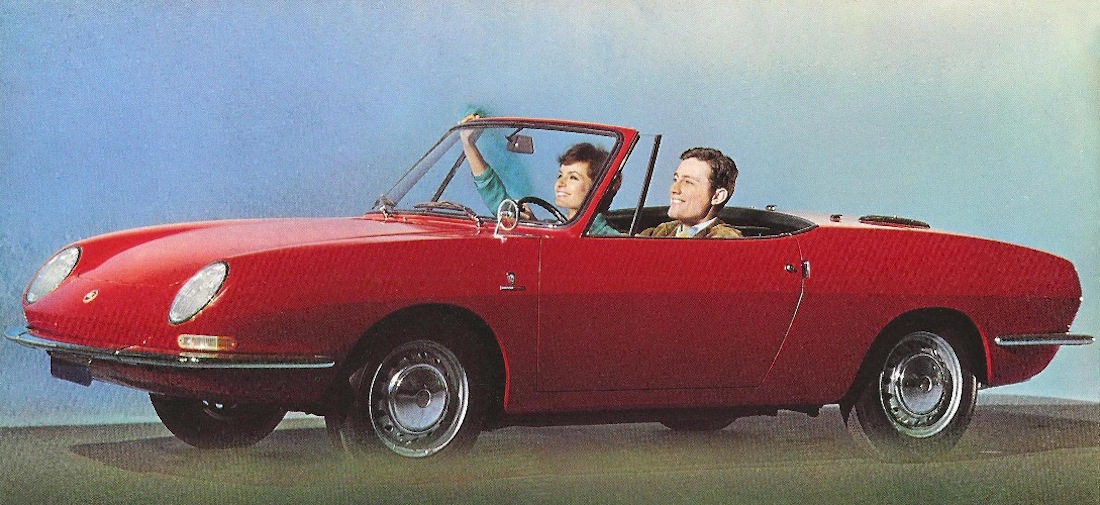
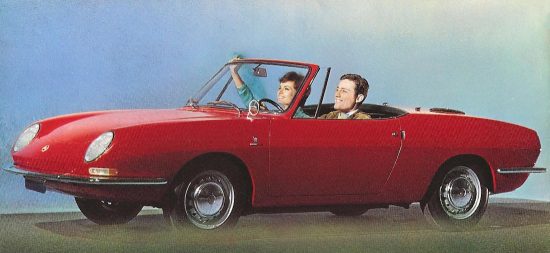
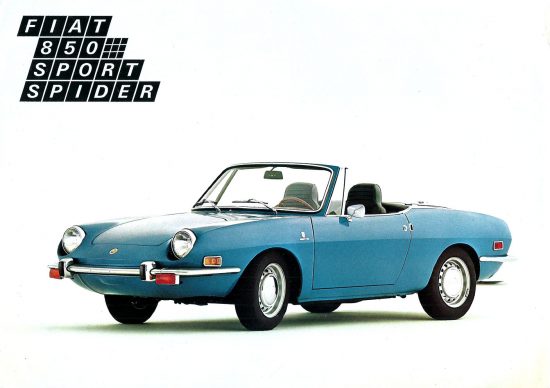
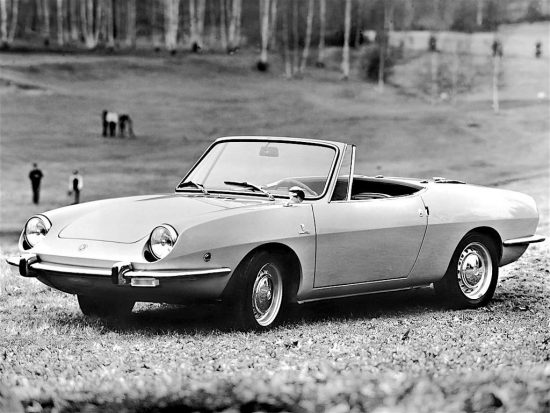

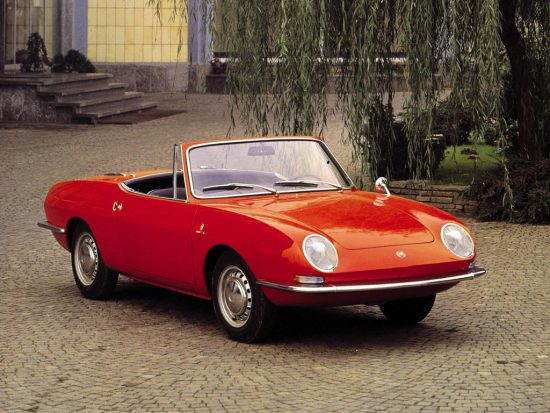
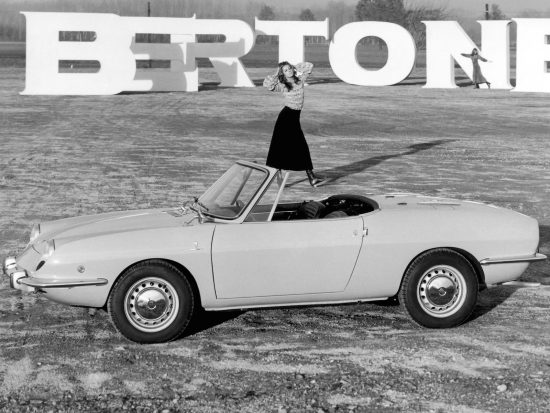
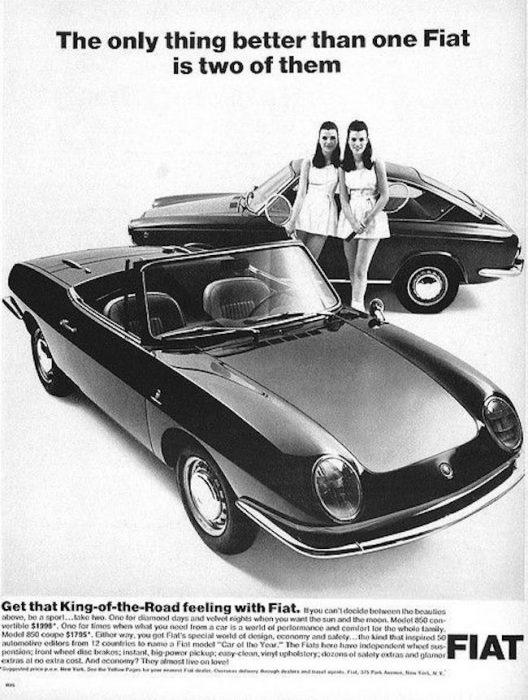
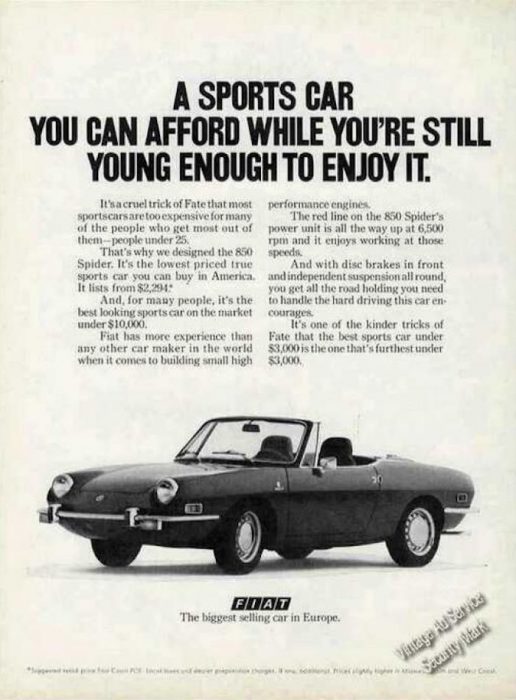


I recently learned my good friend Doug Roberts was a subscriber to this site. I believe he assembled a Fiat 850 Abarth at one time. I wonder if he still has it.
the early sloped/sealed headlight, uncluttered Guigiaro design is superb!…says the new owner of a gorgeous restored ’67
Presently and for the time being, my favorite car to drive and ogle over. Like any Guigiaro masterpiece, just lovely from any angle.
Restored you say!
They tended to rust badly. You don’t say where you live, but the drier the place the better.
And the worst place was down the inside of the body just behind the doors.
There is a drain hole in the recess of, the metal boot cover or the body itself at that point. Those holes allowed the water to drain down along the inside of the body to the bottom. This cause many of them (the Spyders) to actually break in half. The water also tended to pool within the floor pan out of sight thereby exacerbating the problem. So watch for signs of paint bubbling on both sides. I’m not sure, but the body might be a unit body construction. Good luck and have fun, as it is a fun car.
I wonder what they sell for today ?
Obviously I can easily find out, but it would be nice to have it mentioned in the article.
You’ve got a Great Site, Mike. Thanks for doing it. I always look forward to it.
I bought a fiat 850 sport coupe when I was n the army, drove it all over Germany and Switzerland . One of my favorite cars ever! Great article! Don Meluzio
Guigiaro styling aside: Two Fiats? Oh, the Horror!
It’s difficult for most people today to appreciate the diminutive, seemingly slow 850. Even most car enthusiasts don’t get it. When properly maintained, the 850 series models drive so very well for an entry level vehicle. The styling is first rate for nearly all versions. With a low restriction exhaust system, they sound like an engine of twice the size. These cars deliver a driving experience that’s much greater than was required. A trait they share with the most coveted cars ever built.
http://charlotte.craigslist.org/cto/5671945102.html
Fiat 850 spider for sale.
I had a ’67 Spyder. Saw it for the first time at the Chicago auto show. Got it from a local dealer as soon as the show closed.
The ’67, fully loaded, no radio (lol) but with a heater. Total cost $2185 w/ tax. Mine was in a color “Chamois Blue” similar to the later model shown in the article w black leather.
The head lights had a molded glass flush fit cover. The headlights themselves were standard issue.
It was a blast to drive even with the teeny tiny engine.
BUT, A VERY BIG BUT, it was a, excuse the french as they say, it was a P.O.S.. the speedometer fell out within two weeks and that was a harbinger of things to come. It, and all of the other Fiats of the day, simply refused to start at 40 deg F. even pushing it at 40 mph.
Got it to the dealership and when they opened their service area door there was a whole line (10+) of new 850s and 500s that had the same problem. Let them set for about a half hour and they all started as if nothing was ever wrong.
In order to use it in cold, 40 deg F weather I came up with a plastic gal bleach bottle with a cheap hair dryer and a flexible outlet hose to the carb and got it to start with the heated air.
Other things; it went through points like candy, always had spares for the road, had to clean the fuel bowl in the carb of what turned out to be small rust flakes constantly, glad that it had a Webber, so easy to clean with a straw. Replaced the heater core due to leaking within the second year mid-winter, had to repair the seat glide that broke off in two years, also the aluminum transmission mount broke at three years. replaced the tachometer.
These cars are not around simply due to the parts and body failures within mere years, at least around here.
Oh, I loved the car as it was fun to drive and play Juan Manuel Fangio on the expressway entrance ramps as you could do a wonderful 4 wheel drift and enter the flow of traffic with ease in spite of no power.
One other problem, I would have to keep the revs’ up when I got on the “outer drive” on the North end here in Chi. the plugs would load up as soon as I tried to accelerate with the other traffic. Having the revs at 5k at 30 mph before entering eliminated the problem.due to the transition from 35 mph to 45-50 right away.
Well, it was a love-hate relationship for 5 years.
One other thing, the bumpers, although great to looking design were attached to the body on the side, both front and rear.
A nudge was enough to bend the fenders / wings. Do not be surprised to find damage when returning to find out someone parked by ear.
Yes Tom, I still have my home built Fiat Abarth 1300/124 roadster. It’s actually a bored and stroked 124b engine, so really more like a 1450/124. Fun!
All cars are built better in their home market.